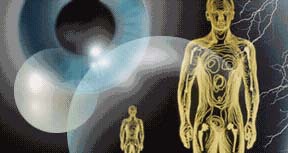|
Artificial fingers created using cow cells Updated 5:22 PM ET June 29, 1999NEW YORK, Jun 29 (Reuters Health) -- Artificial human-like fingers, including joints, can be grown in mice using cow cells and biodegradable polymers, report an international team of researchers. Three types of cow cells -- cells that make bone, cartilage, and tendons -- placed on biodegradable polymer 'scaffolds' grow into tissue "in the shape and dimensions of human phalanges (fingers)," according to plastic surgeons who presented their findings Monday at the 12th Congress of the International Confederation for Plastic, Reconstructive and Aesthetic Surgery in San Francisco. Dr. Noritaka Isogai and colleagues of Kinki University Hospital in Osaka, Japan, collaborated with researchers at Harvard Medical School in Boston, Massachusetts. The team report that the technique resulted in new composite tissues 20 weeks after the cow cell-seeded polymer matrices were implanted into a special breed of mice. Analysis of the new tissues under a microscope showed the presence of mature articular cartilage, such as that found in joints, and bone in structures "as intricate as human (fingers) and joints," the investigators note. They conclude that "the formation of (fingers) and small joints is possible with selective placement of (cells)... into a biodegradable polymer scaffold." |
|
 |
|
Frog Eyes, Ears Grown in Lab Updated 2:06 PM ET January 3, 2000 By ERIC PRIDEAUX, Associated Press Writer TOKYO (AP) - Japanese researchers have grown frog eyes and ears in a lab using the animal's own embryo cells, technology a scientist said Monday could eventually help doctors replace lost or damaged human sensory organs using cells from the patients' bodies. Makoto Asashima, a biologist at prestigious Tokyo University, said the process is an alternative to donor transplants. The team cultivated thousands of embryo cells in a retinoic acid solution for five days to produce the organs, he said. Varying the concentration of the retinoic acid somehow brings forth different genetic instructions in the cells, Asashima said. A lower concentration activates a set of genes producing eyes, while a higher concentration activates genes producing ears. The researchers used embryonic stem cells, the ancestral cells that develop into the tissues and organs in the body. The procedure is different from cloning, in which a single cell from an organism grows into a copy of the original, he said. Asashima said his team is the first to produce the eyes or ears of an animal in a test tube. In a similar, simpler procedure, the researcher said he previously grew frog kidneys and transplanted them into other frogs. The recipient animals lived for more than a month, he said. The team did not test the survival rate of frogs with transplanted natural kidneys, he said. Hideyuki Okano, a professor of neural development at Osaka University's Graduate School of Medicine, said Asashima's work was "extremely striking." Okano, who has been following the research, said it could eventually help scientists reduce reliance on donors for rare organs. Scientists are already able to grow human skin from patients' own cells, and such transplants are carried out in the United States, Europe and Japan, Asashima said. Asashima said he plans to submit his findings, which were first reported in Monday's Mainichi newspaper, to one of two Japanese scientific journals, Zoological Science or Developmental Growth and Differentiation. |
|
|
 |